452 Search Results for VISUAL SUPPORTS
September 21, 2013
by Carole Zangari -
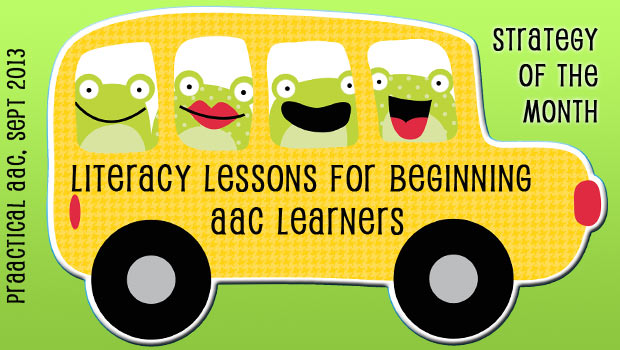
Like some of you, we are often met with skepticism when we encourage teams to work on literacy skills with individuals who are still learning the very basics of communication. Recently, we had the opportunity to begin this journey anew, and model a literacy lesson for kindergartners who have no formal communication system, are not answering yes/no questions, and do not consistently select preferred items when offered choices. Why work on literacy with students who are not routinely expressing their basic preferences? Because the longer we wait, the longer it will take to get there. Because it offers wonderful opportunities to build communication, too. Because when other people see us teaching reading and writing, it changes their perception of the student in a positive way. Because they will enjoy it. Because there are mandates for us to address the general education curriculum. Because if we set the bar high and... [Read More...]
September 13, 2013
by Carole Zangari -
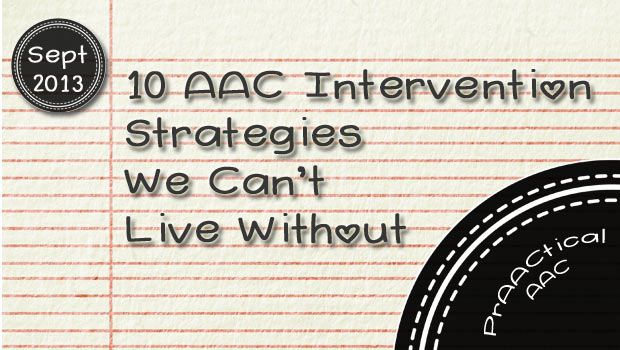
It’s a new semester for us and we’re having lots of conversations with student clinicians about teaching strategies. Here are some of the things they’re putting in their AAC toolkits. Making language visible: Use visual supports to give information, explain, set boundaries, and make expectations clear. Aided language input and focused language stimulation: Teach AAC by speaking AAC. Communication temptations: Make the client want to communicate to get his/her own agenda met Expansions and extensions: The language facilitation strategies we all studied in our language intervention classes work in AAC, too! Repetition with variety: Working on the same thing in different ways is a sure way to build learning and keep treidthings fresh Contrastive examples: Teach through the power of clear examples, both positive AND negative Backward and forward chaining: Great for teaching things that have multiple steps, like sending emails or posting to Facebook Structure: Creating structure helps learner better... [Read More...]
September 12, 2013
by Robin Parker -
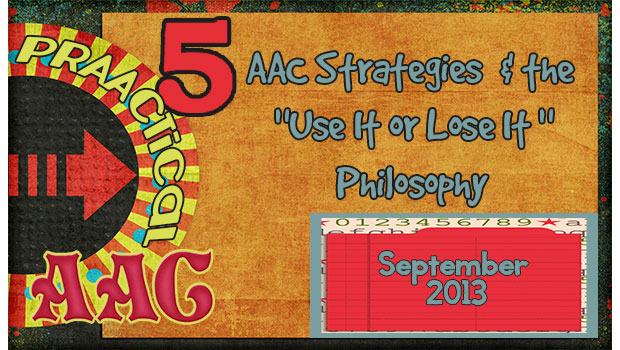
School has begun for almost everyone. Some classes have been in session for a while and routines have been formed, learning is taking place, behaviors have settled down. Now comes what can seem like the hard part: Keeping up with and expanding the strategies that helped students become successful. Instead of trying to fade AAC displays/devices and visual supports, stick with the basics and expand how they can be used. Because if you don’t use it, you may lose it. So: Keep up with: Visual Schedules– monthly, daily, and mini. Even if students know the schedule, continue to use it. Most of us would not like ‘losing’ our day planner or ‘to do’ lists even though we know our schedules. Aided Language Input First- Then Visual Support Visual Boundaries Access to a AAC Display/Device– And the display or device is with the student All the time, everywhere, charged, working, and... [Read More...]
September 5, 2013
by Robin Parker -
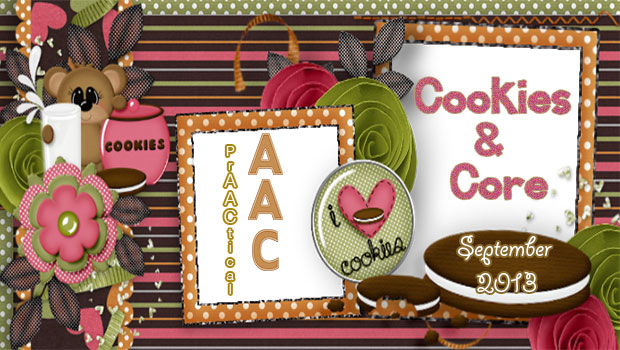
It is International Literacy Month. We always like to celebrate with food. So when we found these cookies at Ikea we just had to get them, use them, and of course eat them. Here is one of the activities we used with these delicious cookies. Can you guess the goals? To create a meaningful language experience, we started with the cookies in a closed brown bag (communication temptation) and “like it” spelled out on the table. Then we took the box of cookies out, spelled “like it”, waited expectantly and after prAACtice with spelling and saying in/out, more prAACtice and Aided Language Input, the student used the cookies to add “out” So the cookies were taken out. We had a yummy snack. Then it was time for recess but before cleaning up, the student does this: Apparently he wanted to go on the swing first. Note: Other visual supports/AAC... [Read More...]
September 4, 2013
by Robin Parker -
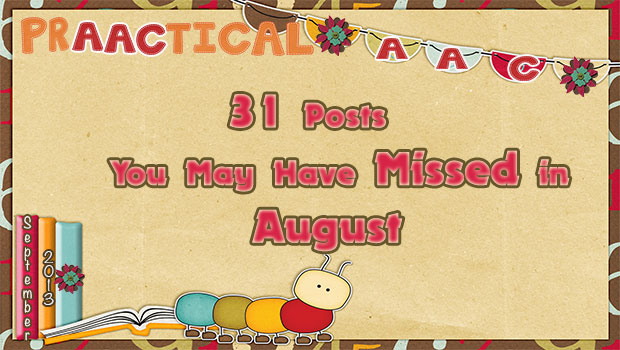
Strategy of the Month Back to School with AAC AAC ‘Must Haves’ for the Classroom & Speech Room PrAACtical Partnerships: AAC & Academics AAC Around the School and Beyond Core Words & the Curriculum PrAACtical Thinking 5 Things to Remember About AAC Technology Fun Friday Commenting to the Max 31 Posts You May Have Missed in July Keep Calm & …………. Great Music Apps & AAC Language Goals 5 Free Resources for Making Communication Boards & Visual Supports 5 Reasons to Say Yes to ‘NO’ Magic Moments with Tellagami Watch It Wednesday: AAC Core Word Vocabulary teaching by Gail Tatenhove & Robin 5 Ways to Use Sequenced Message SGDS and APPS 7 Writing Apps & Activities for ALL Writers PrAACtical Uses of QR Codes Watch This: Example of Teaching Expressive Language with the iPad & AAC Device by the Awesome AAC Chicks 5 Things to Consider About Data Collection in... [Read More...]
August 30, 2013
by Robin Parker -
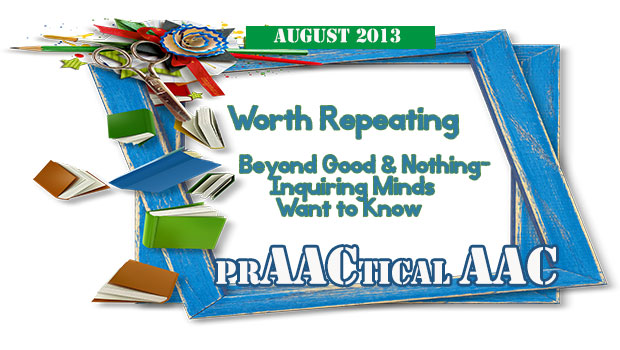
by Carole Zangari, originally published on August 27, 2012 “How was school?” (Good) “What did you do?” (Nothing) This scenario plays out in many cars and kitchens in the after school hours and it can be hard to know who is more frustrated: the kids for being asked or the parents for not getting satisfactory answers. And still, we repeat the process day after day. Of course, we want to know the fine details of what happened and how our children felt, but in some cases, we’d settle for ANY school-related conversation at all. I’ll be the first to admit that it took me way too long to get the hang of how to get information about my children’s school days, and it seemed like just when I did, pow! They were pre-teens and then teenagers. New rule book. Here are some ‘lessons learned’ along the way about those afterschool conversations and... [Read More...]
August 24, 2013
by Robin Parker -
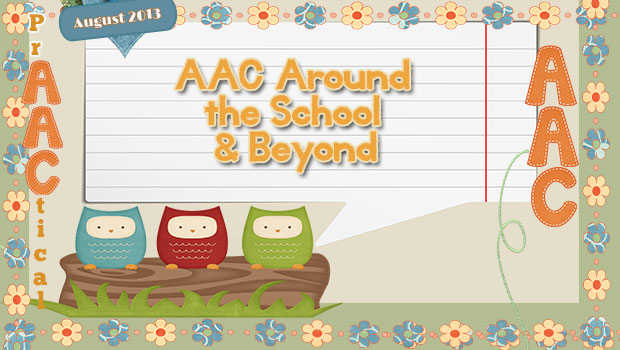
For the August Strategy of the Month, we have been thinking, writing, & talking about AAC in School. School is where AAC learners spend a large portion of their days. There needs to be multiple opportunities for students to USE and LEARN AAC each day. More than that though, we strive for full participation and interaction for students who use AAC. Students should not have to prove that they can do these things before they have ACCESS to AAC strategies and intervention. Here are some things that can be done to help build AAC participation for both students and educators. Provide ACCESS to AAC devices and visual supports throughout ALL activities in ALL places in school and on school sponsored trips/community based instruction. Provide Aided Language Input when teaching AAC to students. Use a Core Word approach when teaching AAC to students but don’t forget about Fringe Vocabulary. Learn and use partner assisted communication... [Read More...]
August 10, 2013
by Robin Parker -
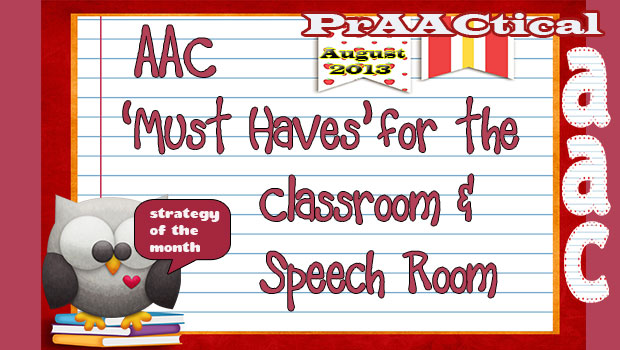
As we were getting ready for back to school and thinking about ‘must haves’, it quickly became apparent that it is not so easy to narrow it down. And the ‘must haves’ would definitely vary depending upon type of class, students, and even school. Based on a wide variety of differences, we organized a wide variety of choices to explore (we apologize in advance if we got carried away but…). Choose what you need, bookmark what you may need later and let us know your ‘must haves’ for a classroom and speech room AAC collaborative approach. We will create an ongoing list. Get Started Before School Starts Do these 10 Things to Get Started with AAC if you are new to an AAC student or classroom Provide AAC Support in the Classroom. Support teachers and educators with tips from Jane Farrall, & learn about AAC in the Classroom by Joan... [Read More...]
August 5, 2013
by Robin Parker -
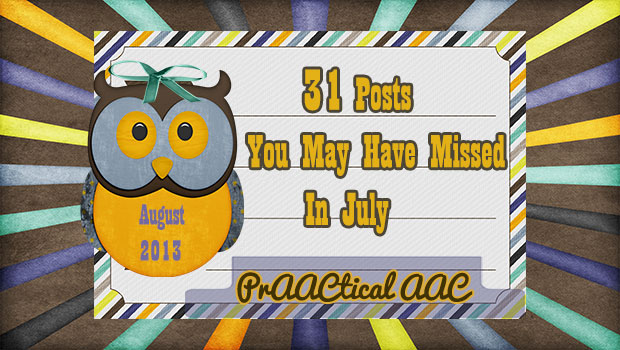
PrAACtical Thinking Free Text-based AAC Apps for the iPad PrAACtical Questions: Can Students Take Their AAC Device Home? PrAACtical AAC Learning & July 4th: Get Ready Get Set Go 4 Free July 4th Apps to SPARK Commenting 30 Posts You May Have Missed in June 4+AAC Tips for Talking About July 4th AFTER the Festivities PrAACtically Ready to Read Did You Know: AADMD Offers Specialty Webinars Visual Schedule Myths Live On..& On Getting to Yes Working with Worksheets Apps to Prepare, Learn, & Talk About Summer Vacations Modify a Battery-Operated Toy To Make It Accessible By Switches 5 Great Ways To Help People with AAC Needs Develop Inner Speech What’s the Connection: Core Vocabulary and Visual Schedules Random App of Kindness Giveaway: Talk About Food Create Your Own Style PECS Book 5 Things to Consider About Assigning ‘Homework’ to Your AAC Clients 8Friday Fun: 8 AAC Activities that are Fast... [Read More...]
July 9, 2013
by Robin Parker -
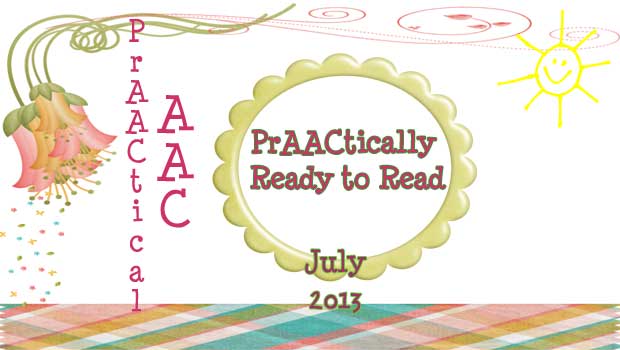
It’s summer and hot where we live (really hot!), humid (really humid)!. This weather makes it a good time for quiet, peaceful activities. Reading is high on our list. No pressure, enjoyable reading. We want ALL learners to enjoy reading. From simple single message voice output devices/apps to high-tech core language based SGDs and everywhere in between, there are lots of prAACtical opportunities for communication building, literacy learning, and just plain fun through reading. Interactive reading, reading aloud to someone, or reading to yourself can all be done in air-conditioned homes or libraries or by the pool or beach where you can cool down with a quick swim. Here are some great resources for adapted books, communication boards to go with books, and visual supports to help with reading. Find a good book, stay cool, and enjoy: New York City Department of Education: Adapted Books Baltimore City Schools- Book Specific Communication... [Read More...]









